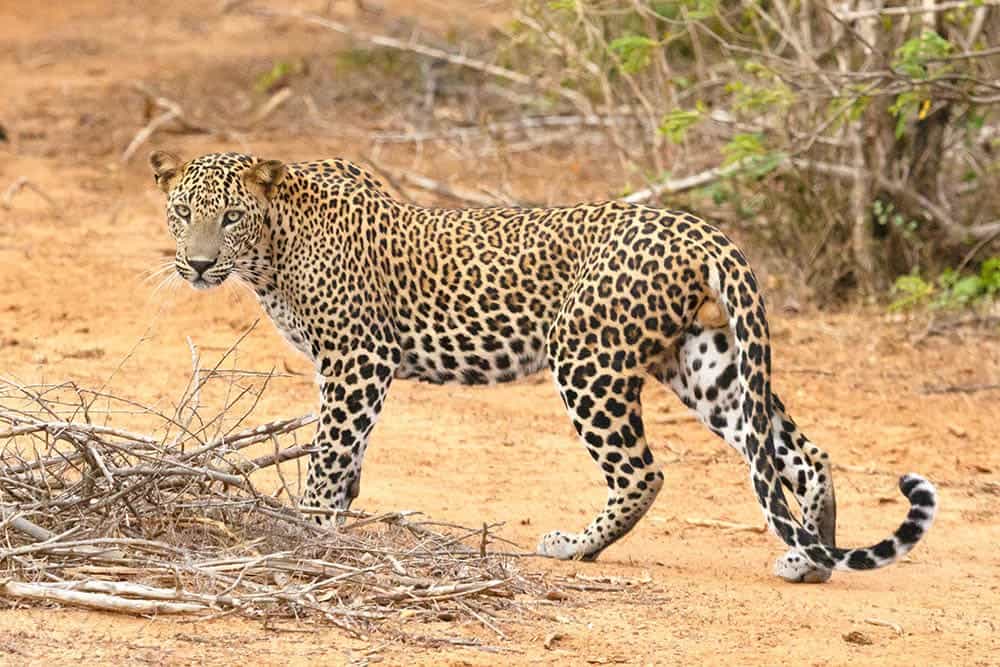Even if you know on a practical level that big cats aren’t the cuddly creatures they sometimes appear like in pictures (especially when they’re babies), it’s still tempting to compare them to your kitty. When your cat curls up in your lap purring, you might be curious if big cats, such as leopards, can purr too. While some wild cats can produce the sound, leopards can’t purr. Do snow leopards purr? No, like leopards, they cannot.
In this article, we’ll explain why snow leopards and other similar species can’t purr and tell you which wild cats can. You’ll also learn what sounds leopards can make, some of which may surprise you! We’ll also cover some other ways big cats communicate and how it can help you better understand your pet kitty.

Why Leopards Don’t Purr

If you ever wonder whether a big cat can purr, there’s a simple way to know for sure. Cats that roar can’t purr, and vice versa. The explanation of why is a matter of basic anatomy.
Like humans, cats produce sounds using their larynx or voice box. The mechanism of purring is not entirely understood but probably involves the movement of air through the larynx and its impact on small bones in the cat’s throat, resulting in a rattling sound. In cats that don’t roar, the muscles and cartilage of the larynx are flexible, allowing the bone movement necessary to purr.
Because roaring is such a powerful sound, leopards and other big cats have different throat structures that allow them to produce it. In these animals, thick, strong cartilage runs along their throat, giving the larynx the power and flexibility to open wide enough to create a roar. However, it also prevents the creation of the softer, purring sound.
Cougars are the biggest wild cats that can purr. Wildcats, ocelots, lynx, cheetahs, and of course, domestic cats can also produce the sound. Besides leopards and snow leopards, lions, tigers, and jaguars are all unable to purr.
What Sounds do Leopards Make?
Here’s a fact that may surprise you: some leopards can meow. Yes, like your cat, snow leopards meow to communicate among themselves. Leopards also growl and hiss, much like domestic cats.
Many leopards, along with tigers and jaguars, produce a unique, non-aggressive sound called chuffing, which is basically the big cat version of a purr. A chuff is essentially a low snort created by the leopard puffing short bursts of air out of its nose with a closed mouth. They may bob their head as well.
Leopards chuff as part of social bonding and communication. It can occur during a mating ritual, to help a mother soothe her cubs, or as a greeting between animals.

Other Ways Leopards Communicate
Besides vocal stylings, leopards and other cats of all sizes have several additional methods of communication.
One is body language, where the position of a leopard’s ears, tail movement, and body position are all used to express emotions and signals. You’ll also recognize these from your cat, such as the flattened ears and lashing tail warning you when your kitty is not in a good mood!
Leopards and other big cats use scratching to mark their territory and warn others away. They may scratch across trees or on the ground, leaving claw marks for others to see. This instinct is one reason your cat has the urge to scratch, sometimes in a destructive manner.
Scent is one of the most common communication methods among leopards and other cats. They use urine marking as a way to claim territory. If your cat starts peeing outside the litter box, one common reason is that they are feeling the need to assert their claim on territory because a new animal or person has entered the family.

Conclusion
While leopards have many traits and behaviors in common with domestic cats, there are some key differences, not just the fact that they can’t purr. No matter how cute they are, leopards are wild animals that should never be kept as pets. Stick to enjoying adorable pictures and videos of baby snow leopards, and maybe consider donating to support vulnerable wild leopard populations.
Featured Image Credit: MarkMurphy, Pixabay
